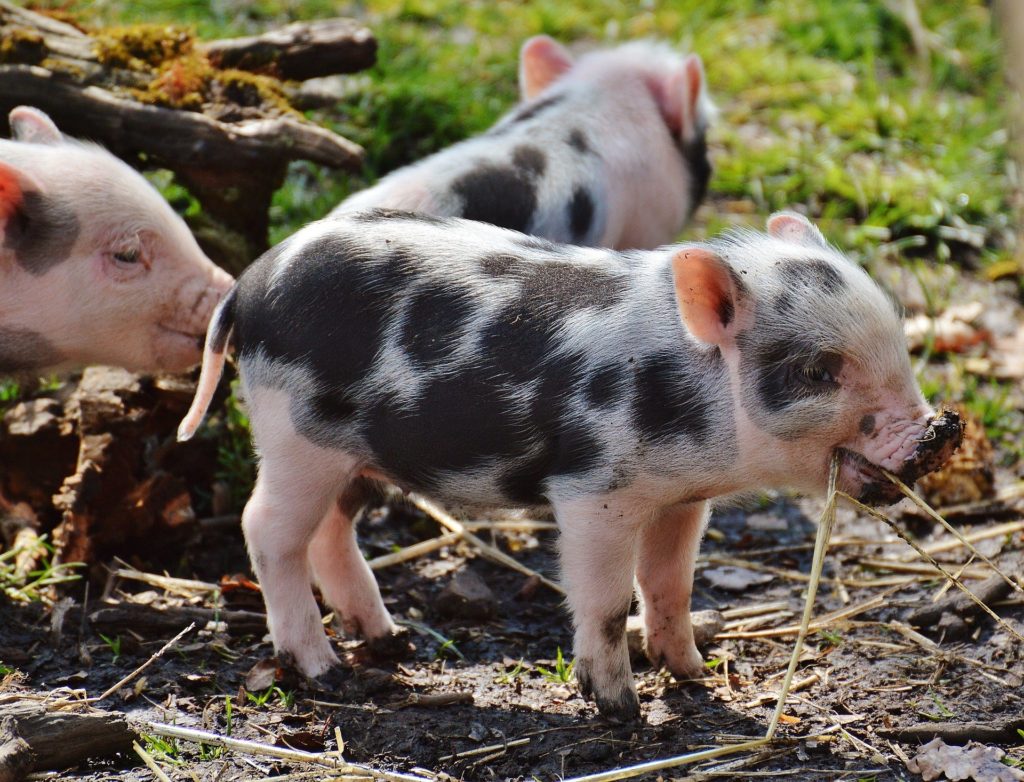
Encouraging Weaning in Piglets Using Creep Feeding
Early weaning can wreak havoc on piglet populations if you handle nutrition poorly, but the science of feeding is evolving in leaps and bounds. Early growth requires more than just the right feed. Processing and transportation slowly destroy nutritional content, so your feeding strategy must include proper handling. Young pigs in commercial pens also tend to under-eat when young, a problem you’ll have to combat if your piglets are to ingest the nutrients they need.
Feed must be nutrient-dense if you’re to achieve lean growth. Cereals and plant proteins such as potato and wheat encourage the most growth, but they aren’t enough. The right amino acids must be offered, the most important of which are lysine, threonine, methionine, and tryptophan. Glutamine helps to sustain a healthy gut during the weaning process, but crude protein is also needed. Piglets also require a lactose concentration of 50 percent at most. Piglets enjoy lactose-rich foods, but avoid the temptation of providing them in excess. Those who’ve passed 12 kg don’t derive any benefits from it.
Calcium-rich foods might be budget-friendly, but such feed tends to be over-fortified. Calcium carbonate also causes an imbalance of stomach pH levels, which in turn reduces protein absorption, so a quality piglet milk replacer is preferable. Maize and other carbohydrates are good energy sources, but avoid rye and triticale as they interfere with nutrient absorption. Barley, rice, and oats add bulk, and vegetable oils support creep feeding up to two weeks after weaning. Once that hurdle has been leached, animal fats should be substituted.
Proteins found in fish meal are expensive, but poultry meal and most other protein sources do the trick at a lower price. Egg-based immunoglobulins eliminate BSE risk, as do soy and potato-based proteins. However, they reduce nutrient absorption, so they should always be heat-treated. The sow is an important part of nutritional intake, so her milk yield must be encouraged.
Minerals
Growth is encouraged through the addition of copper sulphate and zinc to feed, which improves digestion problems while enhancing growth.
Combatting Poor Appetites
The better your living conditions, the healthier your piglets will become. Young pigs struggle to reach 50 kg in weight, partly because of improper weaning. They’re often unable to tell the difference between thirst and hunger, which only worsens the ability to recognise solid feed as nourishment. To add to the challenge, soybeans and other antigens can cause allergic reactions that lead to digestive problems. Creep feeding helps piglets to learn to eat solids while their diets are still supported by suckling. It adds nutrients to their intake while overcoming the malnourishment involved in slow adoption of new food sources. It also prepares the digestive system for weaning in advance. This can improve growth by 20 grams daily. Creep feeding is suggested within a week of birth. Encourage piglets by offering the creep when sows are eating to exploit moments when they’re unlikely to allow suckling.
Feed Processing
Processing will always reduce nutrient content, but there are ways to achieve it at minimal loss. Grinding improves feed efficiency by a meagre 3.3 percent. Pellets push that up to 10 percent. Your feed must, of course, be palatable, and if it’s mashed, it sticks to snouts, encouraging licking and, ultimately, weaning.
Managing Overeating
Piglets grow by 1.5 kg for every 0.1 kg of extra feed. Feeding them 150 to 200 grams daily during the first week of creep feeding suits most conditions.
Hygiene and Maintenance
Mortality rates can plummet when food fouling is allowed, so it’s important that creep feed be kept on a flat, raised surface that’s frequently cleaned. It must be kept out of the sow’s reach and away from direct sunlight, which reduces its nutritional content. Piglets are prone to leaping from under-eating to over-eating, so troughs must be carefully managed. Your total intake should rise by about 500 grams per piglet after a month, aiming for weaning after 28 days at most to prevent under-eating.
Creep feeding is a science supported by plenty of evidence, so the weaning process is easy to do successfully as long as you’re following an accurate guide.







